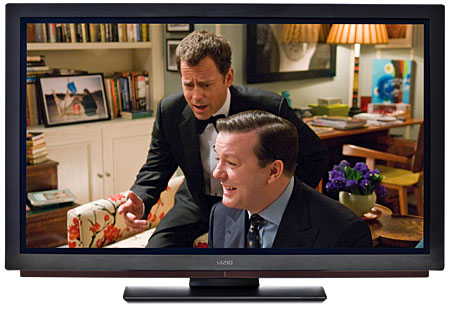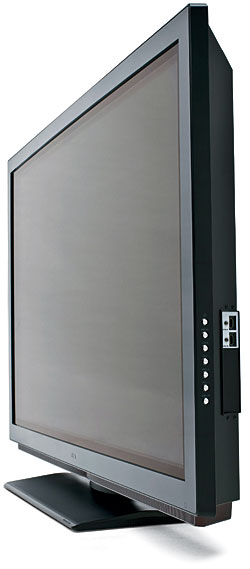Vizio VP505XVT Plasma HDTV
 Price: $1,500 At A Glance: Razor-sharp detail with HD content • Solid blacks and shadow detail • Less-than-inspiring performance with DVD
Price: $1,500 At A Glance: Razor-sharp detail with HD content • Solid blacks and shadow detail • Less-than-inspiring performance with DVD
Best Value at the Warehouse
In the six short years that Vizio has sold flat-panel TVs in the U.S., the company has risen to third place in flat-panel sales (plasma and LCD combined) in the North American market. This tremendous and rapid success is because of the high value that these TVs offer—in particular, they offer surprisingly good picture quality for surprisingly little money.

Vizio’s latest plasma, the 50-inch VP505XVT, is no exception. I’ve been very impressed with the company’s plasma TVs in the past, so I had high expectations—expectations that this display met and even exceeded.
Features
At a list price of only $1,500, you can’t expect an extensive feature set. Still, what this HDTV does provide is impressive. The VP505XVT’s most important feature is the HQV Reon-VX video-processing solution, which is one of the best and most respected processor chipsets available today.
The set offers a 1,920-by-1,080 native resolution with 1:1 pixel mapping, four HDMI 1.3 inputs (two on the side), an SRS TruSurround audio system, and a rated half life of 50,000 hours. That translates to more than 17 years at 8 hours a day, 7 days a week. If you watch that much TV, you might consider getting out more often.

You’ll also need to be a bit concerned about image retention. This is especially true if you watch a lot of 4:3 content, like news channels with a ticker along the bottom of the screen or video games with static elements. All plasmas are susceptible to retaining ghosts of static images, although current models are much better in this respect than earlier generations. Still, most plasmas offer some sort of wipe function—the VP505XVT’s image cleaner displays a full-screen white field to eliminate ghosts. Image retention is usually more pronounced in the first 100 hours of use, after which it subsides substantially.
Unlike most HDTVs with HDMI 1.3 inputs, this one does not support Deep Color (increased color bit depth), x.v.Color (expanded color gamut), or Consumer Electronics Control (CEC), which allows HDMI-connected devices to communicate with each other. I don’t find the lack of these features to be problematic in any way, since no commercial content is produced with Deep Color or x.v.Color. Also, a good aftermarket universal remote can unify the control of an A/V system without CEC.
 One of the nicest features of all Vizio TVs is the company’s one-year, in-home warranty. Vizio also offers free lifetime technical support by e-mail or phone. Such dedication to customer service is rare and laudable in today’s consumer marketplace.
One of the nicest features of all Vizio TVs is the company’s one-year, in-home warranty. Vizio also offers free lifetime technical support by e-mail or phone. Such dedication to customer service is rare and laudable in today’s consumer marketplace.
User Interface
The universal remote is relatively large, with a nicely rubberized underbelly. It can control up to four devices, including the TV. The buttons are well separated but rather small, and they’re mostly the same size and shape. (Interestingly, the four colored buttons—yellow, blue, red, and green—that are found on most remotes these days are all different shapes.) The labels are on the buttons themselves, so you can see them in the dark when the backlight is on. A few of the buttons have multiple functions, and the secondary labels are on the body of the remote with no illumination.
Unlike many other TV remotes, this one has dedicated input-selection buttons—sort of. Actually, each type of input has its own button. For example, the single HDMI button cycles through the four HDMI inputs when you press it repeatedly. Still, this is much better than a single button that cycles through all inputs or calls up an onscreen list.













































